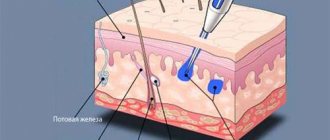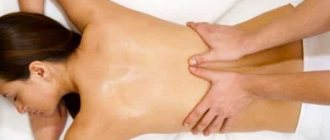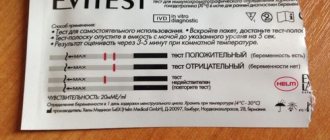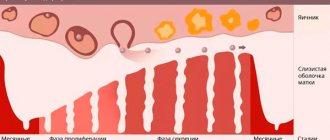What women expect from peeling
Natural renewal of facial skin occurs daily. A new layer is formed under the dead epidermal cells, so the skin retains its barrier function. But the skin does not have time to free itself from excess keratinized particles on its own and in a timely manner. Accumulating on the surface, dead epidermal scales attract atmospheric pollutants and sebum residues, becoming a favorable environment for the activity of bacteria and subcutaneous mites.
Hyperkeratosis, or thickening of the upper layer of skin due to keratinized cells, causes a grayish complexion, deepening of facial and age wrinkles, and oxygen starvation of the young epithelium. Internal processes in the dermis slow down, the production of natural collagen fibers and cell regeneration are suspended. Externally, keratosis manifests itself in the fact that a woman begins to experience many aesthetic problems: skin pores stretch and become clogged with the secretions of the sebaceous glands, redness and ulcers form at the site of ingrown hairs, the reflection in the mirror shows acne, acne and obvious traces of the passing of years.
Chemical and physical peelings help women get rid of the dense “mask” of keratinized skin flakes. The basis of any exfoliation is the mechanism of exfoliation of non-viable cells with a peeling agent. These can be molecules of natural or synthesized acid, fine abrasives, liquid nitrogen, ultrasonic waves or laser radiation. It doesn’t matter what exactly the cosmetologist will use on the facial skin during peeling, the main component of the peeling composition or technique will completely destroy the dense stratum corneum of cells and awaken the dermis to natural regeneration.
Depending on the depth of penetration into the skin, facial peels can relieve women of many appearance defects. Chemical and hardware peels can smooth out the cobwebs of wrinkles, lighten age spots, remove excess oil from the T-zone, relieve inflammation, cleanse and narrow pores, even out the microrelief of the skin after acne and return the face to its former freshness. But no matter how gentle, careful and superficial the peeling is, it should have its time. And not only in terms of season, skin age or indications. The peeling procedure should be performed taking into account the physical condition of the woman. Therefore, menstruation is one of the significant contraindications for acid or mechanical facial cleansing.
During menstruation, it is strictly forbidden to perform medium and deep peels with acids, diamond chips or laser beams. Superficial chemical exfoliation and scrubbing are also undesirable. It is better to consult a cosmetologist about the possibility of such peelings during the period of female bleeding.
Benefits of the procedure for the skin
Peeling refers to the removal of the upper layers of skin, which stimulates the regeneration of underlying tissues and causes a rejuvenating effect. The procedure is carried out using various devices, solutions, and devices.
The benefits of peeling are as follows. Every day, cells in the surface layers of the skin die, this is an inevitable process. Over time, they form a kind of mask that gives the face the effect of aged skin, its color becomes grayish.
The purpose of peeling is to remove these extra layers of cells, as a result of which the underlying, young cells are exposed, and the skin looks somewhat younger. In addition, exfoliating in this way can help remove minor scars such as acne marks and the like.
We recommend reading about whether you can get eyelash extensions while on your period. From the article you will learn about the procedure for eyelash extensions, restrictions for carrying out extensions, and care for eyelashes after.
And here is more information about how menstruation progresses after the installation of an intrauterine device.
Menstrual changes in the body
Critical days are a time of general malaise and mood swings in a woman’s usual life. The phases of the menstrual cycle determine the functioning of all body systems, especially the reproductive and endocrine ones. The latter responds to the state of hormonal levels and regulation of the levels of progesterone and estrogen in the blood. Hormonal imbalance during women's days makes the body's reactions to external factors unpredictable. The state of excitation and inhibition in the brain quickly replace each other, externally manifesting itself as:
- hyperhidrosis (excessive sweating caused by increased activity of the sweat glands);
- increased heart rate;
- anxiety and irritability;
- increased blood pressure and general body temperature;
- high hemoglobin level;
- an increase in the number of platelets in the blood, which leads to prolonged swelling;
- increased sensitivity to pain;
- increased functioning of the sebaceous glands, leading to inflammation and acne;
- a general decrease in immunity and the inability of the body to fully resist the spread of infection.
With the end of menstruation, these physical and psychological worries disappear on their own - the body begins to prepare for the next possible pregnancy.
Low immunity, unstable hormonal levels and a high pain threshold are the reasons why cosmetologists recommend refraining from peeling during menstruation. The condition of the skin on critical days becomes noticeably worse than usual, but returns to normal without outside interventions by the middle of the menstrual cycle. Therefore, do not rush to transform yourself with peeling during menstruation, but rather postpone exfoliation for at least a week.
Menstrual hygiene products
Many gynecologists are against wearing tampons during menstruation. It is allowed to use tampons only 1-2 times, for example, for a certain outfit or while visiting the pool (accompanying a child, relaxing with family on the beach). The reasons for the ban are the following:
- high risks of vaginal infection;
- unhygienic;
- traumatization of the mucous membranes of the cervical canal.
Changing tampons does not always take place in sterile conditions, when it is possible to wash your hands with soap and wash the perineum. When worn for a long time, a warm environment promotes rapid decomposition of blood cells, unpleasant odor, and infection.
During menstruation, it is better to use pads, which should be changed at least every 4 hours. This is necessary for scanty discharge. Excessive bleeding can be controlled using urinary pads.
Peeling during menstruation: pause
Acid and mechanical effects on the skin during menstruation are undesirable for several reasons:
- at this time, the sensitivity of the nerve endings intensifies, the woman feels pain more strongly, so the peeling procedure can cause discomfort and become unbearable;
- swelling of the skin after cosmetic manipulations during menstruation will persist 2 times longer than usual;
- to external influences, especially with laser peeling or microcrystalline dermabrasion, the skin can react with deep and long-lasting hematomas and bruises;
- unstable hormonal levels on women's days can provoke serious post-peeling pigmentation;
- against the background of a general decrease in immunity, an infection that can be introduced into the skin during medium and deep peels will develop rapidly and have a risk of serious complications;
- increased work of the sebaceous glands in the final phase of the menstrual cycle is dangerous due to the appearance of inflammatory rashes, pimples and ulcers. Such facial skin conditions in themselves are contraindications for peeling;
- low blood clotting during menstruation can cause uncontrolled bleeding of the skin during the peeling process.
When planning a course of rejuvenating peelings, you need to take into account the phases of the menstrual cycle. A cosmetologist will help you determine the best time for exfoliation, based on your “calendar of critical days.”
Types of prohibitions and reasons
Taking into account the individual characteristics of each female body, the active phase of the menstrual cycle can be accompanied by different symptoms. Against the background of a woman’s absolute health, there are no particular unpleasant sensations, but with various influences of external factors there are always risks of deterioration in well-being. So, what should you not do during your period?
Ban on physical activity
It is better to suspend active sports during the active phase of the menstrual cycle. If sport is a profession for a woman, it is better to resort to regular warm-up and light training. Increased physical activity increases blood flow to the reproductive organs. Against the background of a tide, bleeding may increase.
You cannot lift weights during your period or start training without prior preparation. With heavy bleeding, a decrease in hemoglobin is possible, which can provoke a deterioration in health. The following conditions often occur after training:
- general weakness;
- overwork:
- drowsiness;
- pain in the pelvic organs.
During menstruation in young girls, the medical commission usually grants an exemption from physical education lessons.
Early age is often accompanied by a vivid clinical picture and frequent mood swings.
Is it possible to have sex
Experts do not recommend having sex during menstruation. The active phase of the menstrual cycle is a direct prohibition on sexual relations not only for moral reasons:
- high risks of infection for both partners;
- a woman's inability to achieve sexual satisfaction;
- soreness;
- aesthetic discomfort (staininess, unpleasant odor, inconvenience).
If women consider menstruation to be a protection against unwanted pregnancy, then gynecologists have long debunked this myth. Sex is the same physical activity that should be avoided during this period.
Is it possible to drink alcohol
Alcoholic drinks of any strength are contraindicated for a woman’s body in general, not to mention the active phase of the menstrual cycle. Under the influence of ethanol, the vascular lumens expand and the blood flow increases. With weakened vessels, increased bleeding is possible, which in severe cases cannot be eliminated without medical assistance.
Ban on saunas and hot baths
During menstruation, constant hygiene is important, but during this period a warm shower before each pad change is sufficient. Clinicians know of many cases where taking a hot bath or visiting a sauna provoked serious bleeding. When swimming in open water or pools, infection is possible. Vaginal tamponing is not an absolute protection against pathogenic microflora.
Various procedures and interventions
One of the contraindications to various cosmetic procedures, surgical operations (except emergency), examinations and laboratory tests is the active phase of the menstrual cycle. This fact is due to a pronounced decrease in blood clotting ability and changes in hormonal levels. Tests may give incorrect results, and bleeding during procedures will be difficult to stop.
During menstruation, it is recommended to temporarily interrupt thermal mud wraps, magnetic wave procedures, UHF heating, gymnastics, and corrective massage.
Experts from the field of aesthetic medicine, plastic surgery and dentistry consider the period of menstruation to be an unfavorable period for carrying out various manipulations. In cosmetology, there are known cases of unpleasant complications of the procedure, pigmentation, bruises and bruises in the facial area (for example, with Botox injections). Chemical peeling and deep facial cleansing can provoke a negative skin reaction, which manifests itself in the form of redness, allergic rash, and swelling.
Ban on drugs
During menstruation, you should not take certain medications unnecessarily that affect the functionality of the hematopoietic organs and blood clotting ability. Analgin and Aspirin as analgesic drugs cause maximum blood thinning, which contributes to increased bleeding. For pain, it is recommended to use painkillers that do not contain acetaminophen or acetylsalicylic acid (Ibuprofen, Paracetamol).
With constant drug correction of some chronic diseases of organs or systems, the effectiveness of the drugs may change. During the active phase of the menstrual cycle, you can discuss with your doctor a change in dosage, if necessary. The use of some herbal preparations can provoke contraction of the uterine muscles, severe cramping pain, and increased bleeding.
Useful: Sick leave transcript
WHAT CHANGES IN THE BODY “ON DAYS SUCH DAYS”?
It is well known that the girl experiences some discomfort during this period. In Rus', women during uterine bleeding were not allowed to go to a construction site or to the garden, not to mention the church: it was believed that menstruation carries with it negative energy. Perhaps, in the hormonal changes in women's moods, our ancestors imagined the finger of the Evil One.
This is not surprising: menstruation affects the entire body, including the psyche. The endocrine system especially suffers: that is, the endocrine glands that regulate hormonal levels. This is why a woman experiences emotional ups and downs that can change at the speed of a traffic light. This manifests itself as follows (see table):
Changes in the female body during menstruation
| SYMPTOMS | COMPATIBLE WITH PEELING |
| The heart beats faster, the sweat glands work harder | SWEATING - makes regeneration difficult |
| Anxiety and irritability appear | NERVOUS INSTABILITY – interferes with the procedure |
| Temperature and pressure rise | Are on the list of contraindications |
| Hemoglobin levels rise | Makes regeneration difficult |
| The number of blood platelets increases | Causes swelling |
| Water accumulates in the body | Causes swelling |
| Pain is perceived more acutely | DISCOMFORT during peeling |
| Sebaceous glands are activated | ROSACEA (rosacea) is a contraindication for most types of peeling. |
| Immunity weakens | Danger of INFECTION |
| Poor blood clotting | BRUISES and BLEEDING may occur and take a long time to resolve |
As if by magic, at the end of menstruation, all these symptoms disappear without a trace, and the body is again in the usual mode of waiting for fertilization. However, even in such a short period of time, you can manage to “break the woods” if you do not take into account all the reactions of your body. To prevent this from happening, you need to be aware of which types of peelings are appropriate during menstruation and which are not.
Alcohol and menstrual periods
Very often, women start drinking alcohol for two reasons:
- elimination of premenstrual syndrome;
- elimination of pain during menstruation.
During premenstrual syndrome, it is customary to drink alcohol to get rid of headaches and pulling sensations in the lower abdomen. Often on such days, women experience increased sensitivity of the mammary glands, as well as some kind of mood problems.
Directly during menstruation, girls believe that they can drink to get rid of various pains, which can be localized in different places. Sometimes the intensity of the unpleasant sensations is so strong that a woman has to use potent medications.
It is worth noting that even experts cannot give a definite answer whether it is possible to drink alcohol during menstruation, so it is important to take into account a number of additional points, and in particular, the effect of alcohol on women’s health in general.
All medical opinions can be divided into two camps when it comes to the possibility or prohibition of drinking alcohol during menstruation. Some doctors are convinced that there will be no problem if you drink alcohol during your period. However, restrictions are placed on the list of acceptable alcohol. For example, red wine is offered.
Other doctors are of the opinion that drinking beer or any other alcoholic drink during menstruation is prohibited. This position is associated with the effect of ethanol on human blood vessels. In particular, they expand, which creates the preconditions for increased bleeding. Particular caution should be exercised by women who already suffer from heavy menstruation, as drinking alcohol can aggravate the situation.
Of course, every woman ultimately makes her own decision whether to drink alcohol or not. However, it is important to understand how alcohol affects your periods. Perhaps this will help draw final conclusions.
WHAT PEELINGS ARE PROHIBITED during menstruation?
Let’s make a reservation right away that we are talking about the “average temperature in the hospital”: we are all individual and react completely differently to the same cosmetic preparations. That is why dermatologists never tire of repeating that before each new procedure, a test for individual tolerance to the components of the product is necessary, otherwise allergic itching and rash may develop.
Otherwise, formally, menstruation is not included in the list of contraindications for the vast majority of types of peeling (which cannot be said about pregnancy). Therefore, deciding whether it is possible to do facial peeling during menstruation should be based solely on common sense.
WHAT PEELINGS ARE ALLOWED during menstruation?
Modern methods of skin exfoliation are very diverse: from delicate gommages to laser resurfacing, and sometimes making a choice is not so easy. One thing is certain: in choosing the appropriate procedure, it is always safer to rely on a specially trained specialist.
If you ask your doctor whether you can do a medium or deep chemical peel during your period, the answer will most likely be no. In this way, the cosmetologist will try to avoid possible post-procedure complications due to a decrease in the patient’s immunity and pain threshold. However, an exception will almost certainly be made for light superficial exfoliations, such as:
- Scrub
- Enzymatic
- Phytic
- Carbon
- Gas-liquid
- Ultrasonic
- Azelaic
- Glycolic
- Apple
- Almond
- Wine
- Lactic
- Lactobionic
- Gluconic
- Phytopilling
Procedures with minimal trauma and gentle ingredients will help prevent the development of inflammatory processes, clean clogged pores, refresh your complexion and improve your mood: after all, an impeccable appearance is very important for us women.
IN WHAT HALF OF THE CYCLE IS IT BETTER TO PEEL?
Everything in the body is interconnected, and the condition of the skin also directly depends on hormonal changes:
- The first phase of menstruation is counted from the 1st day of menstruation and continues until the moment of ovulation. At this time, female hormones (estrogens) are activated, so swelling gradually subsides and sebum production decreases.
- The second phase of the cycle begins after ovulation and takes place under the auspices of progesterones (male hormones). During this period, sebaceous plugs appear and pimples may appear. The body retains water, which results in swelling.
Since it is in the first phase of menstruation that a woman’s body is set up for active recovery, most doctors agree that it is most advisable to carry out peeling at this time (but not earlier than 4-5 days after the start of menstruation).
Expert commentary
Marina Borisenko, dermatologist-cosmetologist (ASMEDIA clinic, St. Petersburg):
“Although menstruation is not a disorder or a failure, but a natural process, nevertheless, it is better to refuse some cosmetic procedures during uterine bleeding. It is worth weighing the risks, whether your body can cope with stress, and, if necessary, undergoing certain types of interventions. If this is not possible, you need to wait at least a couple of days after the start of the cycle and prefer superficial types of exfoliation so as not to injure the vessels.”
Share your review, do you do peelings during menstrual periods and what kind?
Source
Peeling is one of the most popular procedures for rejuvenating and maintaining skin tone. Many fans of the procedure are concerned about the question: is it possible to do peeling during menstruation? Let's take a closer look at this issue.
Beer and something stronger
Unlike red wine, beer and strong alcohol are prohibited during menstruation. It’s hard to call beer a cure for anything. This is only an extra load on the kidneys, which causes too much fluid in the body. In addition, during menstruation, various types of fermentation pose a danger. In particular, beer leads to its formation in the gastrointestinal tract.
Ethanol, a component of beer along with other ingredients, is a toxin for the body. If you drink a couple of glasses of beer during menstruation, you may encounter the formation of low-quality blood, which will remain in the body throughout the next cycle and it is not a fact that it will come out during it. This often causes imperfections to appear on the skin, so it is better to avoid drinking beer during menstruation.
Strong alcohol is also on the list of prohibited drinks during menstruation. Cognac dilates blood vessels. For a while, this, of course, will allow you to get rid of pain, stress and feel a surge of joy, but as soon as it is eliminated by the body, all this will return in the same, and maybe even greater volume. In addition, a sharp narrowing of blood vessels leads to ruptures of capillaries, from which the so-called “stars” are formed.
Of course, there are a number of additional points when it comes to alcohol addiction. When the body receives alcohol on a regular basis, it already gets used to it; after a sharp deprivation of doping, you can fall under the influence of withdrawal syndrome, which sometimes ends in a nervous breakdown. In this case, it is better to seek help from a narcologist, or even better to go to a hospital for treatment.
Is it possible to perform a chemical procedure on the face during menstruation?
Critical days are often the cause of malaise and poor health. This is a time of stress for the body, as hormonal changes occur. On such days it is better not to peel.
But the modern rhythm of life does not always allow choosing a favorable time. If the procedure cannot be postponed, then it is worth choosing the depth of impact on the skin.
During menstruation, it is better to focus on superficial, delicate methods of care. Next, we’ll look at what types of peelings can be done and what procedures are best avoided.
Permitted species
On critical days, only peelings with gentle ingredients and minimal trauma to the skin are allowed. These types of peelings include:
- scrub;
- phytic;
- glycolic;
- enzyme;
- ultrasonic;
- gluconic;
- lactobionic;
- dairy;
- fruit;
- wine;
- almond.
These procedures have a mild effect, but at the same time refresh the complexion, improve skin tone and cleanse pores. But it should be remembered that the pain threshold during menstruation decreases, so even gentle procedures may seem very painful. In some cases, it is possible to take a painkiller before peeling, but first consult with a specialist.
Prohibited species
Deep peeling combats serious skin problems, which is why many cosmetologists equate deep peeling with the simplest types of plastic surgery. Such intervention requires caution.
If the skin is deeply exposed during menstruation, negative consequences may occur. Therefore, on critical days it is strictly not recommended to carry out the following types of peelings:
- laser rejuvenation;
- peelings with aggressive acid compounds;
- diamond grinding;
- microcrystalline dermabrasion;
- mechanical impact.
Types of peelings
Any impact on the skin can be carried out at different depths. Therefore, the task of the specialist who will perform the peeling is to choose the most suitable cleansing option for the given condition of the dermis. The choice will also be influenced by the time of year, the woman’s health, skin type, nature and degree of contamination.
There are 3 levels of impact: on superficial areas, middle sections and deep ones. Light peeling is the simplest and does not entail serious complications or consequences. It is used to simply cleanse all skin types and even eliminate small facial wrinkles. Deep peeling should be done with caution as the skin needs time to heal. But its effect is more significant.
How does peeling work on facial skin?
Mechanical
This is the most common skin cleansing option that absolutely any girl can use. For example, the use of insoluble coffee sediment is popular. This is a natural and simple scrub for the body and even the face.
With mechanical peeling, dead particles are removed by friction between the microparticles of the product and the dermis itself. Various compositions are used as a scrub: crushed peach pits, coffee beans, sugar, as well as synthetic components, for example, silicone balls and others.
One of the types of mechanical peeling is microdermabrasion. In this case, various brushes and cosmetic cutters are used to increase efficiency.
Microdermabrasion
The main advantages of mechanical peeling are as follows:
- this is one of the most affordable skin cleansing options;
- basic knowledge of body care is required to perform;
- the risk of complications is practically reduced to zero if you follow the basic rules of the procedure;
- You can use improvised means, for example, coffee residue.
Watch this video about the technique of microdermabrasion of facial skin:
Chemical
To perform chemical peeling, various chemical compounds are used, usually acids. After treating the skin with them, a slight burn of the surface layer of cells occurs, and after some time the “muff” peels off. Enhanced restoration of the underlying tissues results in the skin looking younger after exfoliation of dead skin cells.
The benefits of chemical cleaning are as follows:
- relatively accessible and inexpensive method;
- can be done without outside help at home.
The following components are often used for superficial peeling:
- gommage; used for superficial cleansing of the skin, contains enzymes and fruit acids;
- mixtures based on lactic acid;
- formulations with retinoic acid.
For a deeper peeling effect, trichloroacetic acid and phenol are used. They even help get rid of crow's feet and other similar fine wrinkles. However, you need to be very careful with such compositions, since excessive exposure to the skin can lead to severe burns and the appearance of hyperpigmentation.
Which half of the cycle is best?
Do you want to get the maximum effect from peeling? Make an appointment with a cosmetologist on certain days of your cycle. The most favorable days of the cycle for peeling are considered to be from the 14th to the 19th. At this time, the body is most prepared to deal with stress factors.
Within a week and a half after the start of menstruation, hormonal levels and the functioning of the sebaceous glands normalize. The procedure in the middle of the cycle is most favorable, because during this period the risk of unwanted complications is minimal.
After exposure to lasers, chemicals and mechanical interventions, the skin recovers faster, the healing process is more active, and the risk of infections is reduced. Controlling your cycle and choosing the optimal days will allow you to carry out the procedure as comfortably and painlessly as possible.
Keep in mind that in the last days of the cycle the pain threshold decreases and the recovery time of the skin after the procedure increases. There is no point in peeling during this period.
Contraindications for use
The peeling procedure has a number of contraindications. You should familiarize yourself with their list before signing up for the procedure. You should not peel if you have been diagnosed with:
- Chronic skin diseases in the acute stage. For example, psoriasis or neurodermatitis. Even if there is no exacerbation at the moment, it is still better to consult a dermatologist.
- Malignant neoplasms of the skin.
- Low blood clotting.
- Allergic reactions. If you are prone to allergies, ask a specialist to test your individual tolerance to peeling preparations before the procedure.
- Acute skin diseases: herpes, pustular lesions.
- Infections accompanied by elevated body temperature.
- Pregnancy and lactation period. During this period, the woman’s body is in a special hormonal state, which can unpredictably affect the effect of the procedure.
If you have any doubts about the safety of the procedure for your body, be sure to consult with your doctor. Do not neglect your health and consider any risks.
Possible complications
During critical days, a complete restructuring of the body occurs. Sensitivity to pain increases, immunity decreases and blood clotting decreases. In addition, the work of the sebaceous glands increases, which can lead to inflammation. This is why cosmetologists recommend avoiding traumatic procedures.
Low blood clotting during menstruation can cause severe bleeding of the skin during intervention in the deep layers of the epidermis.
Formally, menstruation is not a contraindication for peeling. But performing deep peels during menstruation can have negative consequences in the future. The reaction of facial skin to a traumatic intervention can be completely unpredictable.
It is likely that the expected effect of the procedure will not be what you would like.
Possible complications from peeling during menstruation include:
- formation of scars and swelling;
- development of pigmentation and inflammation;
- increasing the duration of healing and skin renewal;
- spread of skin infections;
- the appearance of purulent inflammation.
The influence of alcohol
Ethyl alcohol, regardless of the condition of the body, is a toxic product that damages all internal organs and human systems. The reproductive system is no exception; it is also subject to negative effects, especially at this time of the month.
Despite the message of drinking alcohol during menstruation to relieve pain, alcohol can only intensify these pains. If it acts in the right direction and dulls the pain, then another danger arises. Often, very severe pain indicates some kind of pathology in the reproductive system, sometimes requiring immediate medical intervention. By dulling the pain, you can easily miss the right moment and start a chronic process.
Ethyl alcohol leads to water retention in the body. This does not directly affect menstruation, but the overall health does not change for the better. This will overload the urinary system, which results in swelling.
During menstruation, a woman's hormonal background changes, which is reflected in her mental state. Alcohol has a depressant effect on the central nervous system, with the benefit of hormonal fluctuations, especially when drinking alcohol. It is difficult to predict exactly what the result will be in this case. Often, when women develop alcohol dependence, menstruation stops altogether, which is by no means a positive sign, but leads to infertility.
Advice and recommendations from gynecologists and cosmetologists
The question of peeling during menstruation is the most common. Experts have formulated tips for using a cleansing procedure during menstruation:
- During critical days, peeling is not recommended. But if it is not possible to reschedule your visit to a cosmetologist to another day, then choose a superficial type of peeling. Gentle cleaning is less traumatic for the body during critical days.
- Choose a time for peeling in advance. This is an important step in caring for your skin. Plan the procedure for the middle of the menstrual cycle. One and a half to two weeks after the start of your period, you will improve your skin condition much more effectively.
- Experts advise choosing a peel for your skin based on the phase of your cycle. In addition, when performing peeling, you should take into account your skin type and its current condition. A cosmetologist or dermatologist with appropriate qualifications will be able to select the appropriate type of treatment.
- Do not perform peelings with deep intervention during your period. Not only will you waste money and not get the results you want, but you may also face negative consequences.
Peeling is a highly effective procedure that allows you to cope with many skin problems. But you should choose such a procedure only after fully studying all the nuances and contraindications. To achieve the best effect, you should plan your peeling taking into account your menstrual cycle. Peeling before and during menstruation is strictly not recommended. The optimal time for skin exfoliation is the middle of the cycle.
Source










